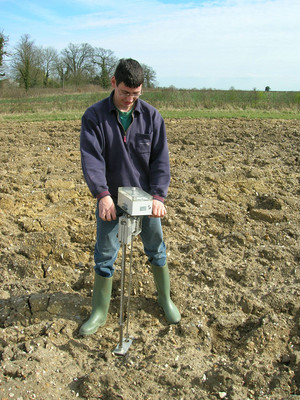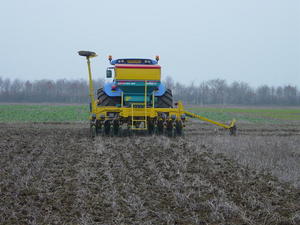Soil seems to be back in fashion. Last week, there was even an hour long programme on it on peak time telly. I didn’t really like the “cooking does not come tougher than this” Masterchef-like presentation. This style was also used for recent harvest programmes; “will the potato yield and quality be good enough?” was repeated several times in one episode. I know, I know; I’m getting old and curmudgeonly!
Also announced last week was a website called the UK Soil Observatory. This has collated the mapped information generated by some lead research organisations. Just bang in your postcode and you can get a huge amount of information on your soils. However, those wanting field specific data may be disappointed. It’s worth a look, perhaps at a slacker time of year than this.
Much of the increased interest in soils has come about because of the industry’s frustration over not being able to increase yields. We’ve just about exhausted the potential of plant nutrition and crop protection and plant breeders are making steady but not dramatic progress. So the question in the minds of many is can we significantly increase yield potential with improved soil management?
I’m not sure of the scale of yield improvement that we can expect but we must, as an industry, investigate potential approaches to improve soil management. The problem is that this must be done in the field and long-term trials are required. Unfortunately, government and levy-bodies are reluctant to commit to long-term field trials. Agricultural charities are less reluctant and have had the foresight to fund two long-term trials that are being carried out by NIAB TAG. These have been running for the best part of 10 years and it is only after a few years that the results became of interest.
NIAB TAG’s STAR Project on a clay soil in Suffolk is in its ninth year. The plots are of a size where farm scale equipment can be used. This has clearly demonstrated that, despite all the recent rhetoric, ploughing is certainly not inferior in generating yields when compared to non-inversion tillage to a depth of around 20cm. If anything, ploughing produces the highest yields, but not necessarily the highest margins. I realise that there are downsides to ploughing but these results challenge the views of some of the more evangelical supporters of non-plough tillage. The results of this trial also show that soil organic matter is, as yet, little different in plots cultivated to a depth of 10 cm every year when compared to deeper tillage. More information is available here.
The question remains as to whether or not the long-term adoption of cover-crops and/or companion crops in addition to the retention of soil residues can result in real improvements. A 30 year trial at Morley in Norfolk has shown that incorporating straw every year rather than removing it has resulted in an increase in organic matter from 1.57 to 1.75%. This doesn’t sound a lot but the difference in soil aggregate stability is amazing. Part of this increase in aggregate stability may also be due to the increase in soil microbial biomass that results from the annual retention of straw residues. Together, this may result in easier seedbed preparation and less surface capping but how to measure this in financial terms is problematical. It clearly demonstrates a major obstacle in transferring knowledge on soil related issues. Uptake of some techniques may be higher if a monetary value can be calculated.
In addition to these changes in soil organic matter, soil microbial biomass and aggregate stability, there is a non-significant reduction in the bulk density of the soil where the straw is incorporated rather than removed every year. This may mean that the draught requirement is reduced. Plans are afoot to measure this.
There is a strong argument that the annual incorporation of crop residues, whilst producing positive results, may not be enough to make a dramatic difference to the ease of cultivation and yield potential. The additional adoption of cover crops may result in more demonstrable differences. This could be true particularly where there are spring crops in the rotation. In this case, cover crops have more time for growth and will also result in less nitrate leaching over the winter. This is an area of intense interest at the moment and the basis of another charity funded long-term trial, this time on a medium soil type at NIAB TAG Morley in Norfolk. Again there is more information here

